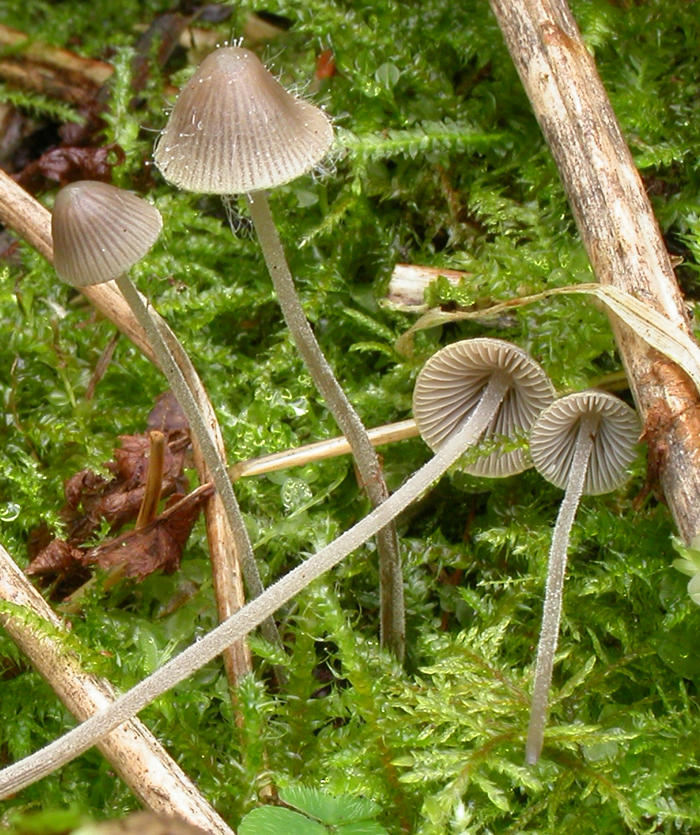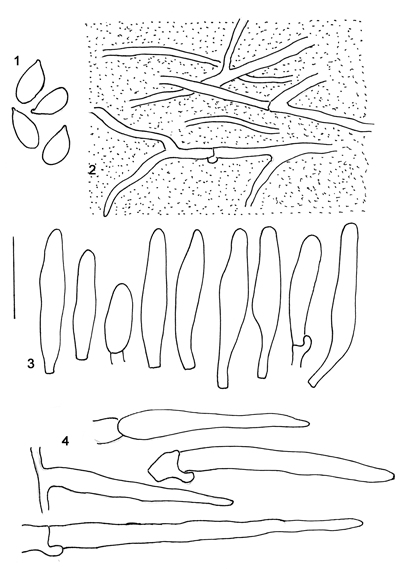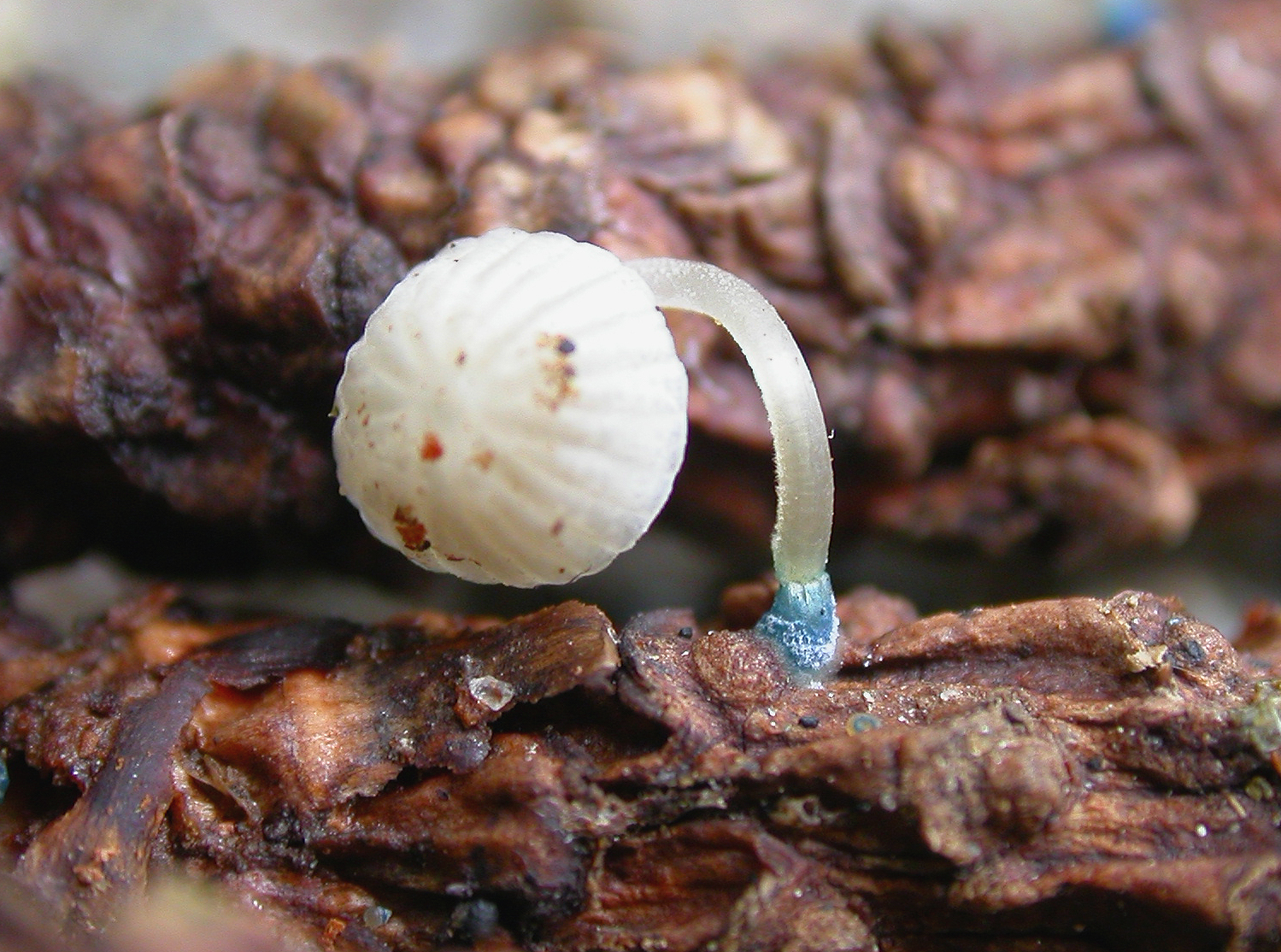Mycena amicta
Mycena amicta
Description
1. Spores, 2. Hyphae of the pileipellis, 3. Cheilocystidia, 4. Caulocystidia.
Cap 5-15 mm across, conical to campanulate, sulcate, translucent-striate, finely puberulous, covered with a separable gelatinous pellicle, pale grey-brown or pale sepia brown, sometimes with an olivaceous, greenish or bluish green shade, margin at first somewhat involute, later straight, often bluish green, or more rarely dingy citrine to ochraceous yellow. Odour indistinctive. Gills 17-25 reaching the stem, ascending, narrowly adnate, greyish to greyish brown, with the edge pallid to whitish, at times reported to be yellowish, greenish or bluish. Stem 40-70 x 0.5-2 mm, hollow, cylindrical, entirely covered with a dense and fairly coarse white pubescence, greyish brown, usually somewhat paler at the apex, occasionally with a slight lilaceous or violaceous tint, the base at times somewhat rooting, concolorous or with some blue-green stains or entirely blue. Basidia 30-40 x 6-7 µm, clavate , 4-spored. Spores 7.5-10.7 x 4.5-6 µm, Qav ˜ 1.4, pip-shaped, smooth, amyloid. Cheilocystidia 16-45 x 3.5-7 µm, clavate, subfusiform or more often cylindrical. Pleurocystidia absent. Lamellar trama dextrinoid. Hyphae of the pileipellis 2-4.5 µm wide, branched, anastomosing, smooth with scattered cylindrical excrescences, embedded in a layer of gelatinous matter. Hyphae of the cortical layer of the stem 2-3.5 µm wide, smooth. Caulocystidia 50-145 x 8-11.5 µm, fusiform to subcylindrical. Clamps present in all tissues.
Ecology and distribution
On decayed wood and woody debris, mostly of conifers but also deciduous trees. Late summer to late autumn. Widely distributed.


